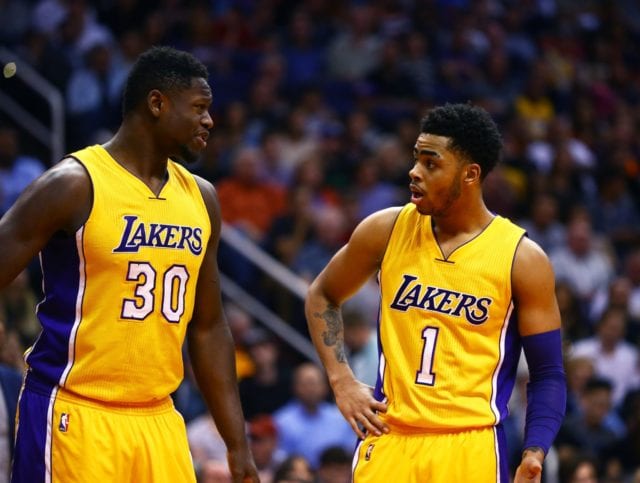Basketball fans everywhere are celebrating the announcement of a new Collective Bargaining Agreement (CBA) for the NBA, which guarantees that a lockout between the league and the Player’s Association won’t happen. However, for some players, the raises that are coming via the deal can be frustrating. Players under rookie contract, which are typically below-market-value, can’t be particularly thrilled that rookies starting this summer will be making considerably more than them.
— Get 15% off everything in the Lakers Nation Store right now by using the promo code ‘Lakers’ —
Fortunately, it appears that such frustrations were anticipated and that a partial remedy has been included in the deal. According to Tim Bontemps of the Washington Post, the new CBA will include raises for players under rookie contracts:
While the rookie scale is shooting up by 45 percent next season, it has led to an obvious question: What about all of the players currently on rookie scale deals who, because of when they came into the league, missed out on the scale’s dramatic increase? The league and union agreed to build in some increases to the current salaries in order to lessen the difference – though these increases will not be part of the salary cap figures for these players, which will remain as they already were.
In the 2017-18 season, all players under a rookie scale contract from the past three drafts (2014, 2015 and 2016) will see their salary increase for that season by 15 percent. In 2018-19, players still under rookie deals from the 2015 and 2016 drafts will see their salaries increase for that season by 30 percent. Finally, in the 2019-20 season, players in the fourth and final year of their rookie contracts will see their salary that season increase by 45 percent.
The increase of 15 percent per year in the new CBA will impact Lakers players Julius Randle, D’Angelo Russell, and Brandon Ingram, as all three are still on rookie contracts. It may not be as big of a raise as the percent that the rookie scale is scheduled to increase for new players coming into the league, but it’s still a solid increase.
For the Lakers, the key here is that the increases will not be included in salary cap figures, which means that the Lakers’ trio of youngsters will continue to tie up the amount of cap space in the future that the team has been expected them to. In this way, it’s a win-win: the players get more money to reflect the new economic reality of the league while the team doesn’t see their ability to add free agents hindered by a decrease in available cap space.





